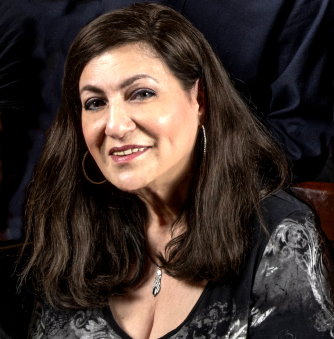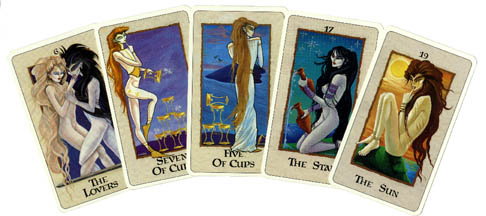
 Welcome to my web site!
Welcome to my web site!
Doreen Molloy
The Tarot
![]()
Page Links
![]() What to Expect From a Psychic Reader
What to Expect From a Psychic Reader
![]() Personal PowerPoint Presentations
Personal PowerPoint Presentations
![]() Proof Positive, Metaphysical Wisdom
Proof Positive, Metaphysical Wisdom
![]() Proof Positive: Book Introduction
Proof Positive: Book Introduction
![]() FAQ for Developing Psychics & Mediums
FAQ for Developing Psychics & Mediums
![]() Grief Recovery / Experiencing Loss
Grief Recovery / Experiencing Loss
![]() Working with Psychic Medium, John Edward
Working with Psychic Medium, John Edward
![]() On the Music Scene with Strange Brew!
On the Music Scene with Strange Brew!
![]() 2012 - And the End of the Mayan Calendar
2012 - And the End of the Mayan Calendar
![]()
The Connelly Deck
Frequently Asked Questions
What is Tarot?
The Tarot is an extremely useful resource in terms of psychic development. As a tool, it is used to trigger psychic information to flow through the mind of the reader... as the imagery on the cards stimulates ones psychic sensory pathways.
There are thousands of different Tarot decks to choose from, reflecting many different artistic styles... as well as numerous instructional books, many of which are specifically written for individual decks. The Tarot consists of 78 cards, 22 of them referred to as the major Arcana cards… with the remaining 56 cards used for points of clarity. The 22 major cards contain a form of ancient, esoteric [inner] knowledge that the reader may subconsciously access thereby opening the psychic pathways. The earliest pictograms of the Tarot can be originally traced from the Book of Thoth, an ancient Egyptian writing that is similar in design to the images pictured in the Egyptian Book of the Dead. The history of how the Tarot came into existence as a divination system is a fascinating topic. To those of you who would like to expand your inner wisdom on Tarot as well as the intriguing mysteries of the ancients, I would direct you to the books of Tony Bushby, an Australian author who has done an exceptional job of uncovering the truth … as well as countless untruths that exist within our current religions and belief systems. A master at unraveling the secrets of the ancient mystery schools and the origin of the Tarot, you can find information on his books at: www.joshuabooks.com.
What are Tarot cards used for?
Divination through the use of the Tarot is simply a way of exploring the influences that are present in your life. I usually begin with a standard Celtic Cross [ten-card] spread for a general reading and as I move through the session, I display additional cards for clarity. Over the years, I have developed my own pattern which works well for me, although I'm sure that everyone is unique in their methods. For special sessions, I sometimes include the use of rune cards and crystals, and do other types of layouts. The items that a psychic works with are referred to as 'divination tools'. They can be Tarot and/or playing cards, crystal balls, gemstones, pendulums, tealeaves, coffee grounds, runes, shells, beads or any combination of these items… and perhaps even some others that are of a more personal nature. Tarot cards can also be used for practical problem-solving, creative visualisation, meditation, self-improvement and as a tool of understanding... as well as for divination. Some people collect Tarot cards simply for the joy of the artwork, while other delve further into research and study of the history of the Tarot.
Why are there so many types of Tarot decks?
Different artists interpret the Tarot symbols in differing ways, each adding their own perspective. There are also so many themes that can correspond with the tarot system... and there are thousands of decks available, catering to many diverse interests, from baseball to voodoo. There's a Tarot deck to match just about every interest or belief.
Is it bad luck to buy your own Tarot cards?
No, not at all... It's an old myth among Tarot novices that your first deck must be given as a gift, or that it's somehow bad luck to buy your own deck. There is nothing wrong with obtaining your own set of Tarot cards and that way, you can choose a style and art that is compatible with your tastes.
How do I choose a Tarot deck for myself?
First, it is extremely important that you 'connect' with the deck you will be using as your main working deck. What I mean by the word connect is that you should resonate with the cards in such a way that simply by handling and viewing the deck, it will provoke psychic information to flow through you. One of the things that most beginners do wrong (as I did) is that they pick up the most commonly sold deck [in most cases, that would be the Rider-Waite deck] and then they wonder why they aren't perceiving 'something psychic' as they begin working with the cards. It may not be a problem with you at all; although the Rider-Waite Tarot is a fine deck, you might simply need to work with a different one. One way to find out for sure is to seek out a metaphysical shop in your area that has a large selection of Tarot cards and examine them. Most shops have sample decks that you can actually hold in your hands and scan through. When you handle a deck that speaks to you emotionally, you have most likely found one that you are resonating with. What you will notice is that working with the right deck will open your psychic sensory pathways much quicker and promote psychic development.
As a collector, I have about 35 decks now, but I will only conduct psychic readings with my 'working deck' - which in my case, is the Connolly Tarot... A sample of four cards from that deck are pictured at the top of this page. The instructional books by Eileen Connolly are also excellent, having been written in three volumes, for The Apprentice, The Journeyman and The Master.
Why do some readers use different types of card layouts?
While there are many types of layouts, the most commonly used one is referred to as the ten-card Celtic cross spread. As the cards are placed down, each one represents a different life area, with cards 1 through 6 representing past and present situations... and 7 through 10 addressing the present and future. Most Tarot readers usually agree on what each life area represents:
1} Where you are now;
2} What is before you;
(Or what is crossing you, meaning in your direct path)
3} The basis of the situation;
4} What is behind you;
5} What is in the potential future;
6} The outcome of the cross [present];
7} Your greatest fears;
8} People and elements in your environment;
9} Your greatest hopes and dreams;
10} The outcome card for the entire reading [present/future].
However, readers don't necessarily have to limit thmeselves to using only ten cards. During the 1980's when I began to study the Tarot in-depth, I was struggling with the concept that I was supposed to complete the entire reading with just those ten cards. Try as I might, I would get off to a great start and then get jammed, finding that my information flow would fall short. Then one day as I was in the middle of a reading, I thought...“I wonder what would happen if I pulled three extra cards for clarity on the life area [card] I was interpreting at that moment”… And like magic – a new layout was born. This is one of the things that I can teach you to do in my Tarot Workshop!
It provided me with a way to secure the detail that I needed to fill in the gaps and provide psychic information that was of a much greater depth. By using this technique, I simply build on the original layout and pull as many additional cards as I need. It is always essentially my own unique spread, since I don't pull further cards in any particular order within the life areas; I simply go wherever my psychic impressions lead me. As I progressed with my own personal development, I found this method to work extremely well … and I still use it to this day. What this taught me is that although one should follow the rules to learn the basics, it's also perfectly fine to add one's own spin to the process – and make it your own.
In addition to the traditional ten card spread, there are many other types of layouts... however, the type of spread that a reader uses is really a personal choice; whichever one works the best to open one's psychic pathways is the way to go!
How should one read cards that fall in the reversed position?
You will find that instructional books [which address the interpretation process of the Tarot] are reasonably consistent; they only vary slightly with regard to definitions and meanings. An exception to that rule concerns the few books that do not recognize reading cards that fall in the reversed position; however, the general consensus is that the reversed meanings are very important. What is interesting to note is that although reversed meanings are sometimes the opposite of the "upright" meaning, they are not always the exact opposite.
Here's an example of an opposite meaning...
[Note: Pay attention to what happens to the images on this card when they're reversed.] For example, in the Tower card of most decks, two figures are falling out of the Tower on their heads. If the card is reversed, they're landing on their feet. So you can take the upright Tower to mean a chaotic situation that leaves you feeling out of control; reversed, it can mean that it's chaotic but you land on your feet.
Here's an example of a reversed position that is not an exact opposite...
The Fool in the upright position usually means that there are new opportunities or beginnings, with several different paths that may be taken; in the reversed position, it usually means that one makes bad decisions... or poor choices.
The Londa Deck
![]()
![]()
